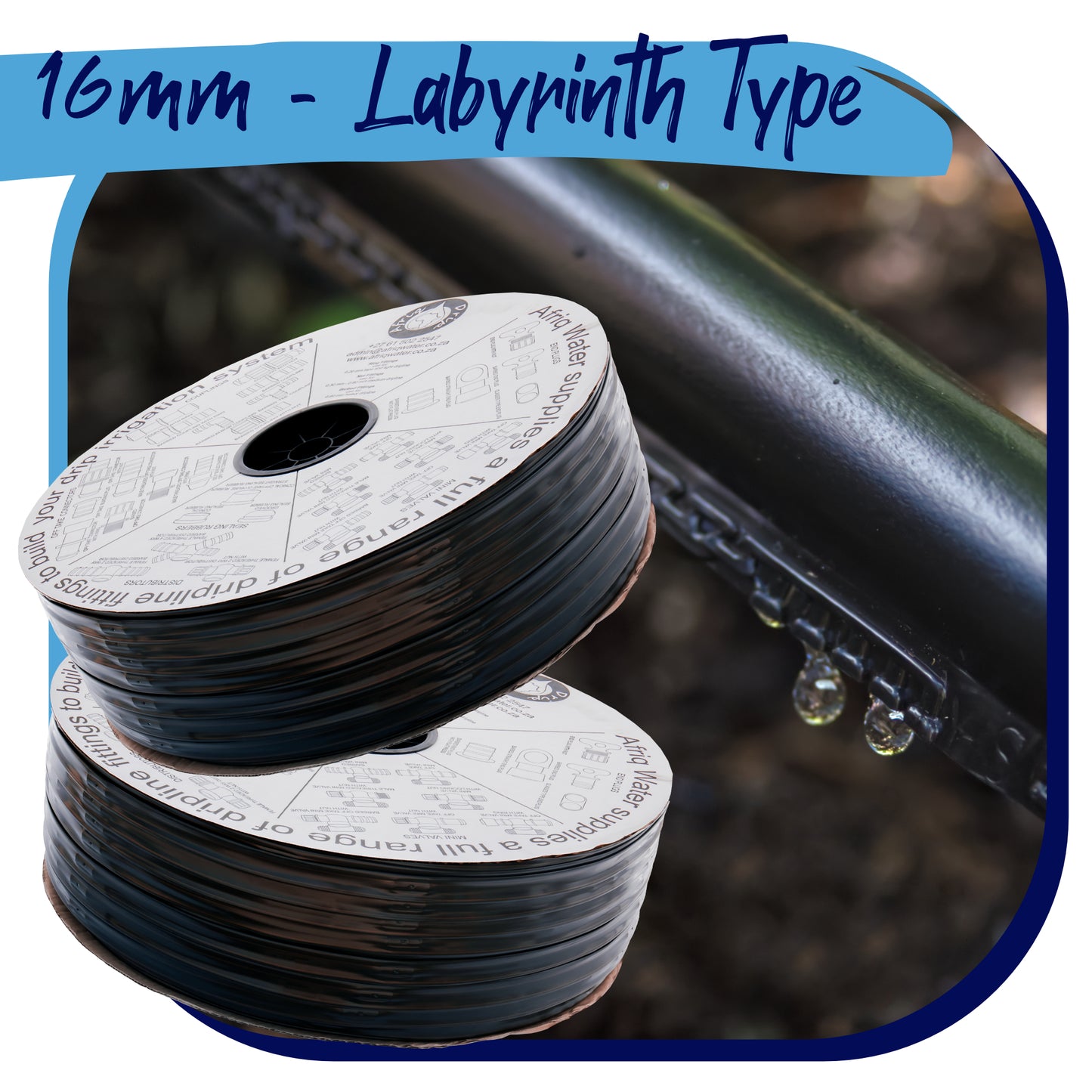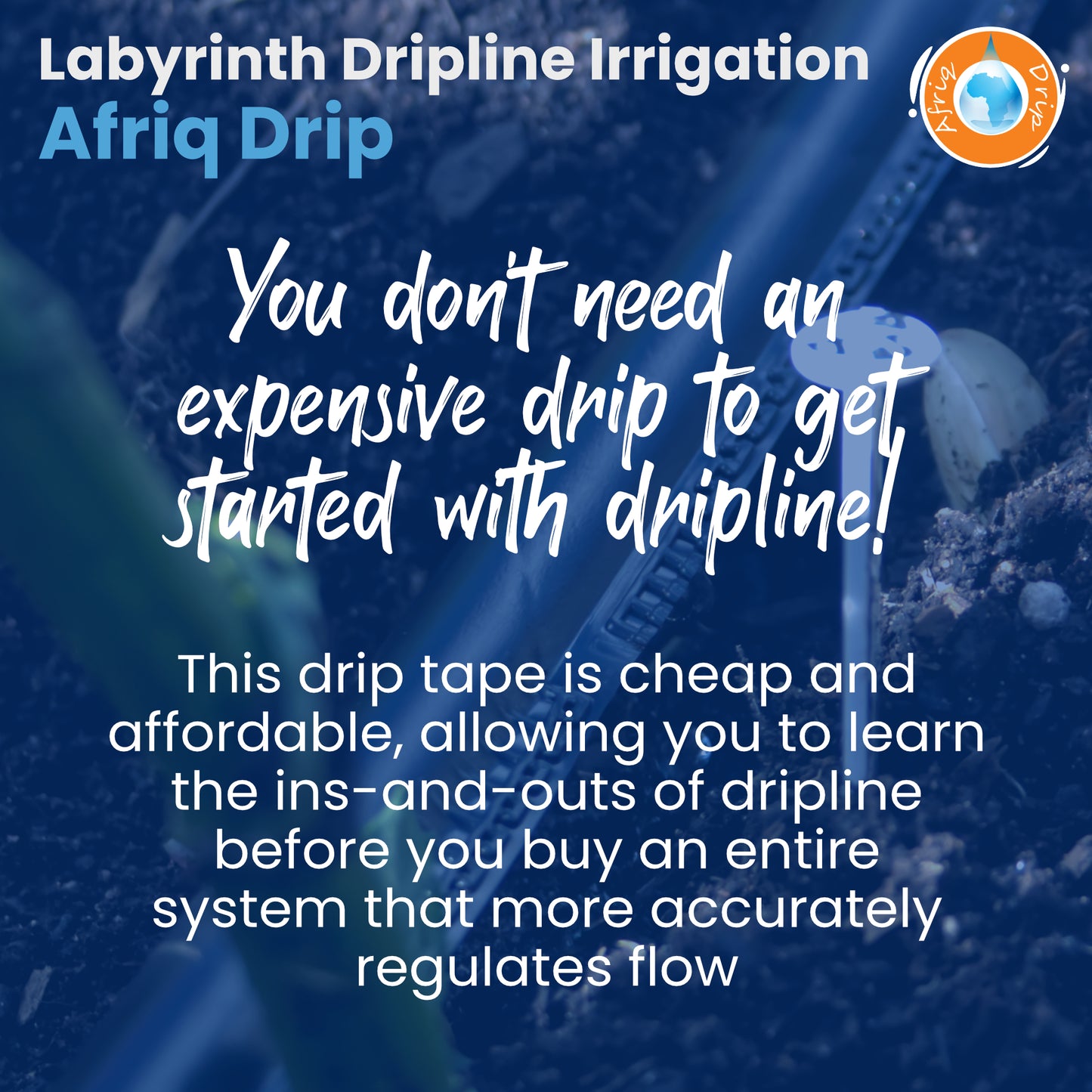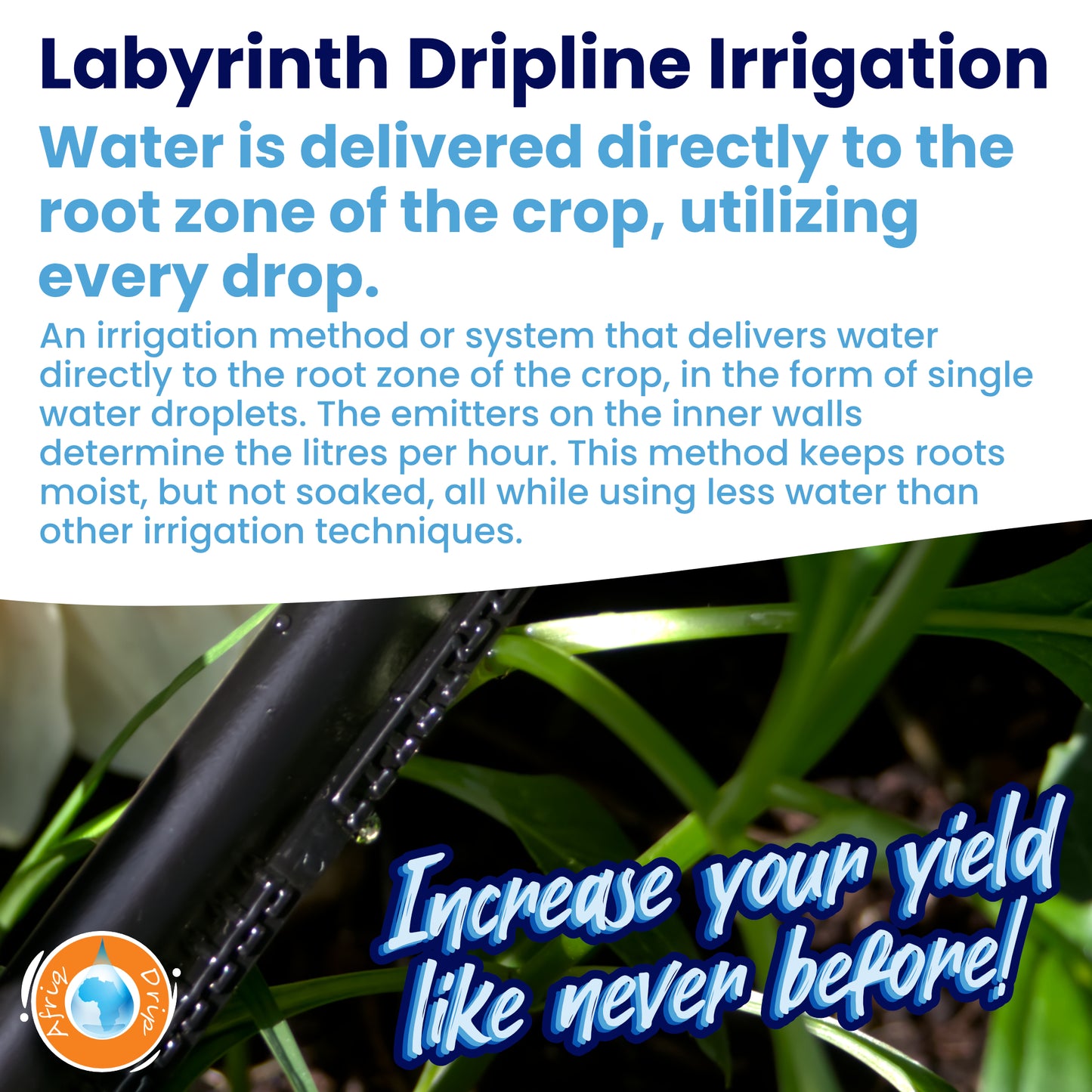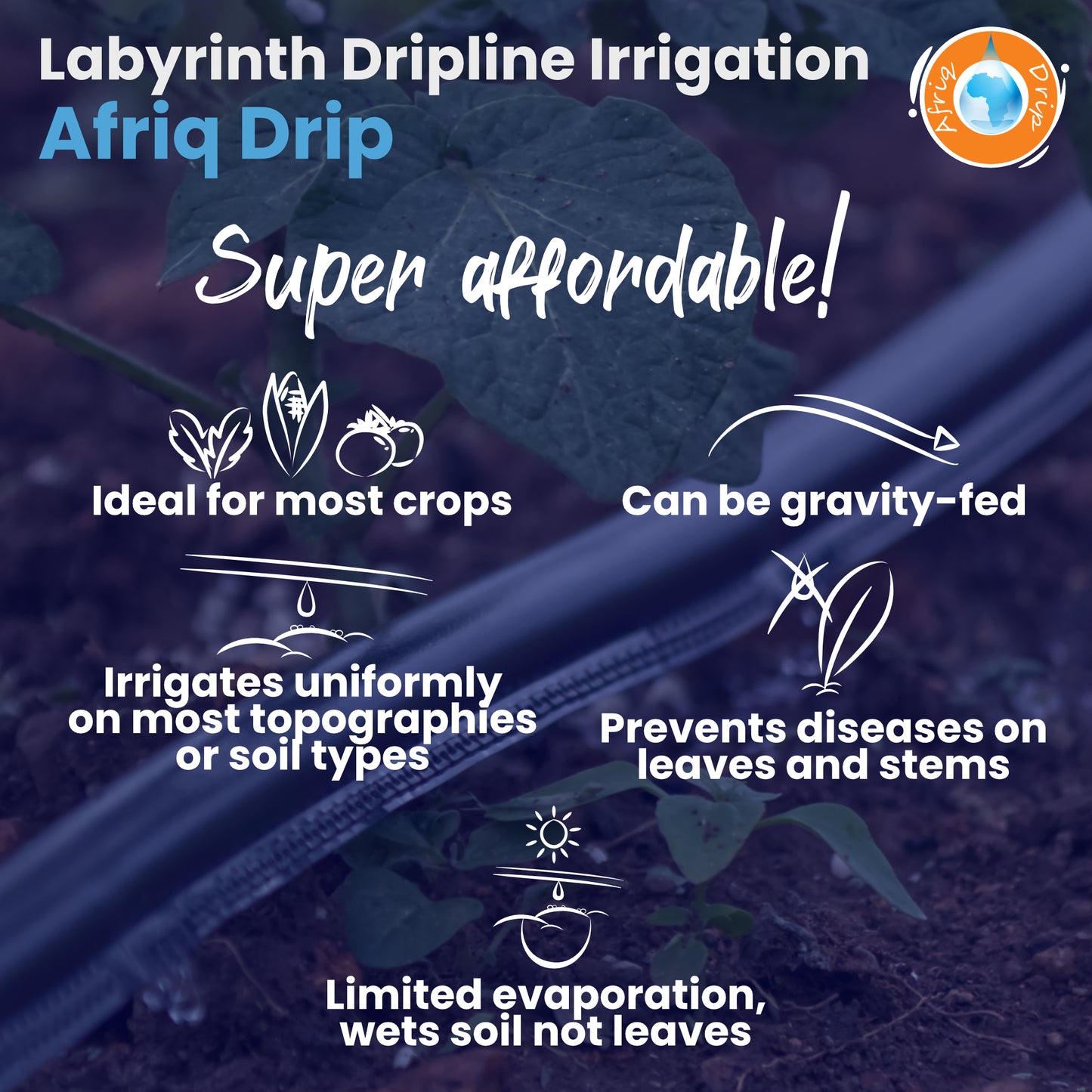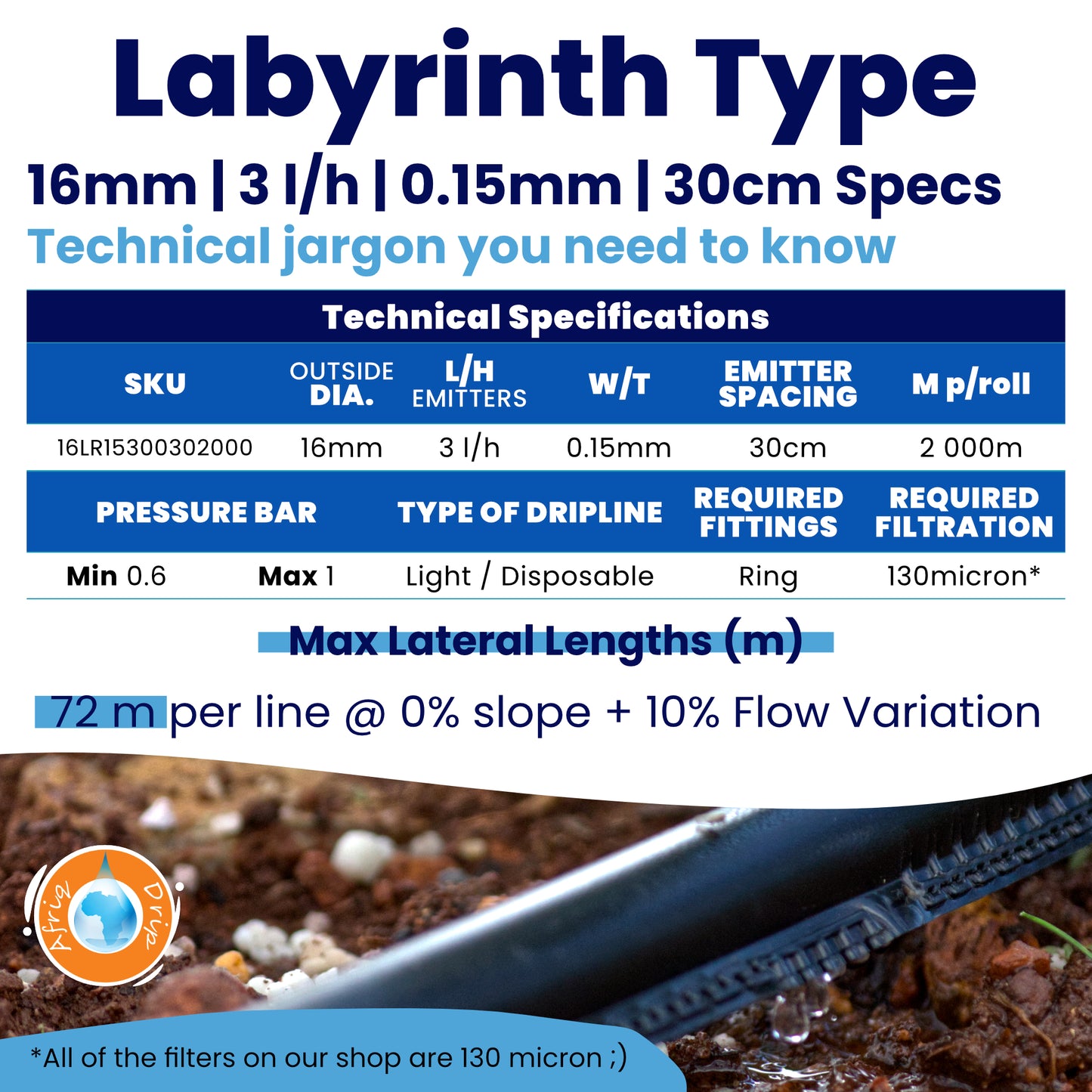Afriq Drip 16mm OD Non-PC Labyrinth Type Dripline Irrigation 3 l/h
Afriq Drip 16mm OD Non-PC Labyrinth Type Dripline Irrigation 3 l/h
SKU:16LR15300302000
Couldn't load pickup availability
Take a peek @ images for more info
What is labyrinth dripline?
Labyrinth-type dripline pipe without emitters
Also known as turbulent flow drip, maze-flow dripline,
Single-Wing Drip or long-path dripline
This type of dripline works a lot like normal dripline, which is a pipe that is cut and laid out on top of the ground, delivering water directly to the root zone of the crop in the form of droplets. The main difference to the other type of dripline you'll see on our shop is the method of water flow - normal dripline uses an emitter, labyrinth-type does not.
The labyrinth type has slits where water can be fed into a labyrinth path, and through the turbulent movement, exit the pipe at an accurate flow rate of 1 BAR.

What are the specifications of this Labyrinth Dripline?
BAR Range Operating Pressure: 0.5 - 1
Compatible Fittings: Ring Type (Find them here!)
Roll length: 2000m
Outside Diameter: 16mm
Wall Thickness of pipe: 0.15mm*
cm Spacing between drippers: 30cm
l/h Drippers: 3
Max Lateral Length per line: 72m**
*W/T is the Wall Thickness; i.e. how thick the wall of the pipes are. ** Max Lateral Length per line determined at 1 BAR pressure and flat, even conditions. Please note: We recommend the use of a filter with this system, as particles will cause wear-and-tear on inner walls of pipe.
Definitions of Dripline / Drip Tape
Wall Thickness
Shortened to W/T
The thickness of the dripline walls, in mm.

Inside Diameter
Shortened to ID
The measurement from one side of the pipe to the other, on the inside, in mm.

Outside Diameter
Shortened to OD
The measurement from one side of the pipe to the other, on the outside, in mm.

Flow Rate
@ 1 BAR (Recommended)
The litres of water emitted by the emitters in a certain time, normally 1 hour.
Emitters
Determines your flow rate
A small plastic device, used to control the flow rate and litres per hour of water (measured @ 1 BAR) from the system to the emitter hold, welded to the inner walls of the dripline pipe during manufacturing. The design of each litre per hour emitter is unique, engineered to obstruct and control the movement of water to deliver a precise, accurate flow rate.
Emitter Spacing
Available from 20 - 120 cm
The distance between two emitters, repeated across a roll of dripline.
Dripline Benefits
Up to 50% water saved
Lower water consumption with limited water waste and evaporation. Water is delivered directly to the root zone or soil of the crop, where it will have less evaporation as it is almost immediately absorbed into the soil, and protected from the sun.
Up to 30% crop increases
This statistic is according to the FAO - Source to follow. BUT - Truly, the proof is in the pudding and it's one of those things where it truly can be seen in before and afters. Source: (Food and Agriculture Organization of the United Nations) - The FAO reports that more efficient irrigation, like drip irrigation, can directly increase productivity by ensuring crops receive the right amount of water at the right time..
Prevents diseases
By reducing water contact with plants' leaves, stems, and fruits; diseases like mildew and rot will not grow on crops as easily as flood or sprinkler irrigation.
Ease of use
Super easy to install, use and dismantle - truly a plug-and-play system that with a little input can increase your yield significantly.
Reduced weed growth
Does not irrigate spaces between beds (depending on soil type, etc.) and will reduce water given to unnecessary and harmful weeds.
Gravity-fed system
Depending on slope of land, if water source is above the crop, the system can work at such a low pressure that gravity-fed systems are possible.
Dripline vs. Flood/Sprinkler Irrigation
Dripline
Dripline irrigation offers a steady, consistent application of water and nutrients to help plants grow fast and plentiful, without the danger of under or overwatering.
Flood Irrigation
Flood irrigation often floods fields once every few days. Crops suffer bouts of drought that stunt their growth and quality with these systems, followed by watering that drowns them and deprives them of essential oxygen, often leading to root rot.
Is this Dripline Wall Thickness right for me?
Yes! If you have lime in your water or you're just starting out. This isn't made to last years, but it'll get you started cheaply and effectively.
Is 3 l/h right for me?
The litres per hour emitters you choose for your dripline is totally determined by the crop’s needs. If, for example, 3 litres an hour (our most popular choice) is too much water per session, watering times can be customised to the needs of the farmer. Some crops, like Saffron, need very little water, whereas other crops like berries needs lots of water.
Is this 30cm dripper spacing right for me?
Determined by the crop and the seedling supplier, as different crops require different spacings between them. Cabbage and watermelon will have different spacings, so use the spacing required for your crop. If 30 cm doesn't work for you - NO STRESS! We have lots of dripline options available :)
Share
